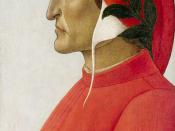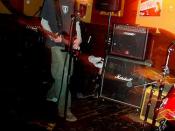Looking at the definitions by Maurice Charney and Barbara Freedman of "farce," the first work that came to mind was not Feydeau or even Peter Bogdanovich (director of What's Up, Doc?), but Kevin Smith's Clerks.
The story of one (very bad) day in the life of Dante Hicks is a fairly dark comedy, and doesn't seem "silly" enough on the face of it to be a farce, but a critical look at the film and the characteristics of farce, I think, will bear me out.
To start from the end, and with the most cinematic aspect of the film (which was shot pretty much with the "set-down-the-camera-and-walk-away" strategy), is the accelerated climax of the story. The fight scene between Dante and Randal in which the store is destroyed, and then the clean-up sequence in which it is restored, are shot in time-lapse, with big chunks of the movement of the character just cut completely and not shown on screen.
The impact of this cinematic strategy is that the action of the climax is over in about thirty seconds and the denouement (easy to spot, since Smith labels it) begins almost immediately.
The fight scene was brought about in the first place by the disclosure of information (by Randal) that Dante was concealing from his girlfriend (Veronica), which followed almost immediately on the heels of Silent Bob's monologue and Dante's sudden change of heart with regard to what it is he wants out of life. Just as our hero is realizing "He's right....I love her!" Randal is saying to Veronica, "So that's it. He doesn't love you anymore...." Take, also, the idea that this ending could only come as a punishment to Dante for betraying his girlfriend and disrupting the social order by cheating with his ex (the town whore),


